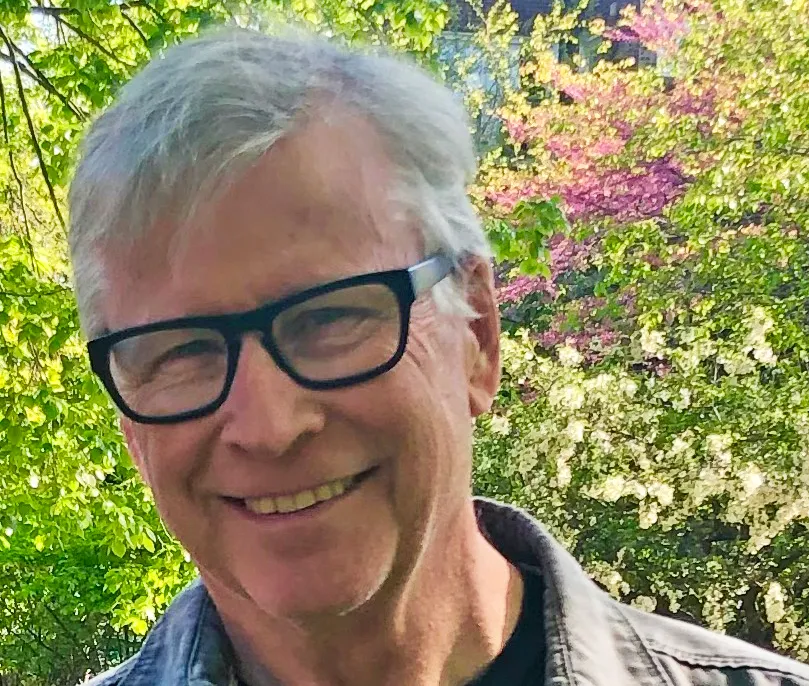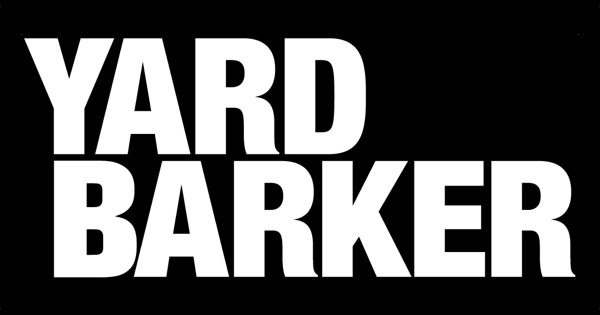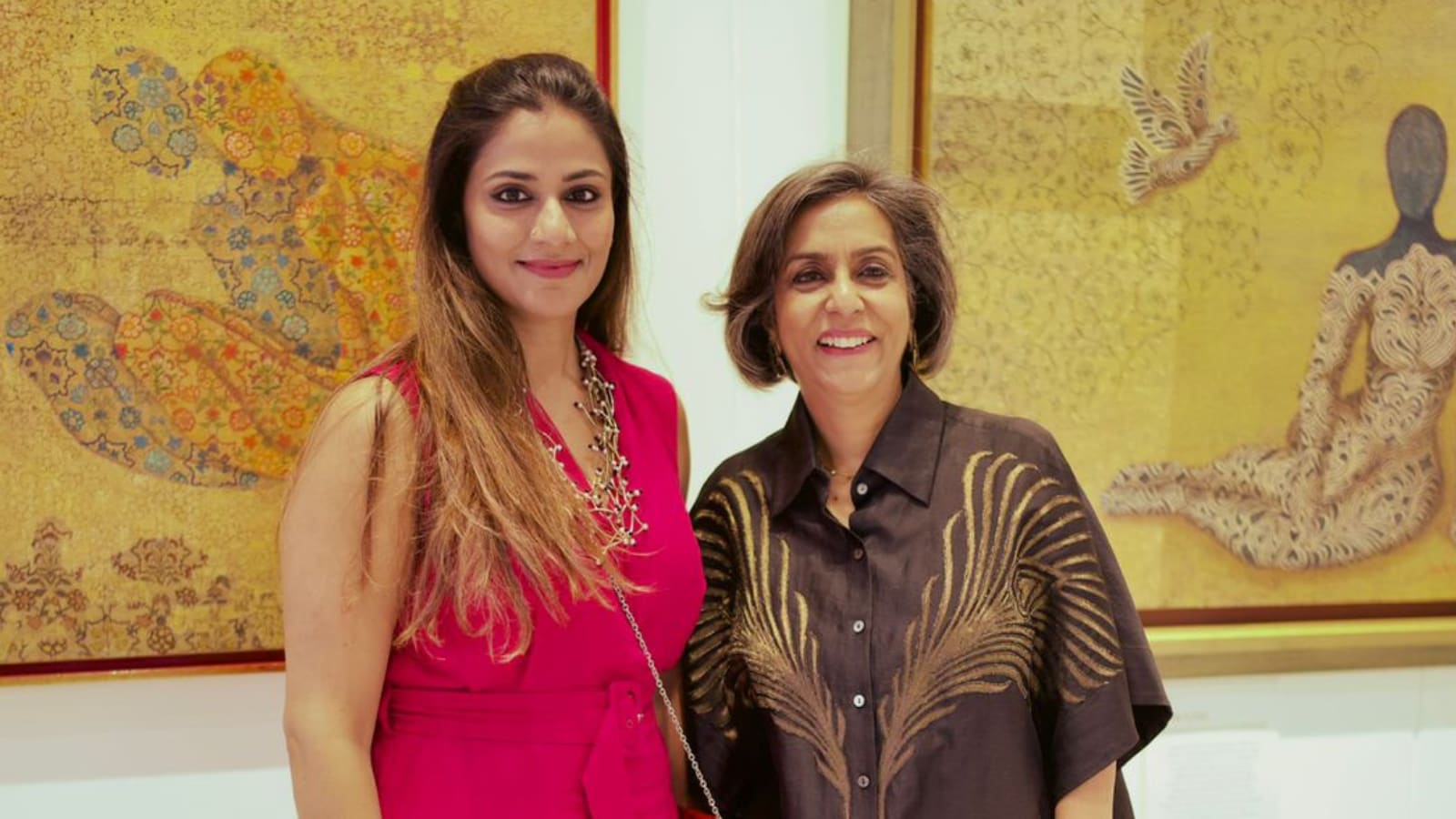
John Morris brought an extensive understanding of stagecraft and a keen eye for audiences to his long career as a Chicago-based theater architect who designed performance spaces like the Steppenwolf Theatre’s mainstage, the Lookingglass Theatre, the Athenaeum Center, the Black Ensemble Theater and the Old Town School of Folk Music, among others.
“John could just walk into a space and know exactly whether it worked or not — where the stage would be and where the dressing room block would be, and how you wanted to get into the space,” said Patrick Danaher, a longtime managing architect at Morris’ firm, Morris Architects Planners. “We’d go back to the office, he’d do a quick sketch and we’d lay it out and get it to work, and then on my own, I’d go test it to see if it could be done a different way. And every time I had it tested, he always had it nailed from the get-go.”
Morris, 77, died of complications from pancreatic cancer on Aug. 23 at his home, said his child, Sarah. He had been a Ravenswood resident for 46 years.
Born in Detroit in 1948, Morris grew up in Midland, Michigan, and graduated from Midland High School. After earning a bachelor’s degree in political science from Oakland University outside Detroit, Morris worked behind the scenes on a raft of productions in Detroit, New York City and Chicago. Self-taught, Morris worked on theater sets as a carpenter, stage electrician and scenic artist at the Meadow Brook Theater in Rochester, Michigan, right after graduating from college.
In 1974, Morris moved to Chicago, where he continued honing his skills and opened a Chicago scenery shop, performing work for off-Loop theaters and even, if work was slow, undertaking drywall and remodeling work. Ultimately, he worked on more than 200 different productions between 1970 and 1980.
“He loved the visual aspects of the theater and enjoyed the hands-on nature of the work and the creativity and artistry involved,” Sarah Morris said.
In the mid-1970s, Morris was helping design a production of Shakespeare’s “As You Like It” in the auditorium at Navy Pier’s east end, which was completed as a bicentennial project in 1976.
“Jerry Butler was chief city architect at that time and he was planning that wonderful renovation of the pier,” Morris told the Tribune’s architecture critic Paul Gapp in 1989. “We were developing an elaborate lighting grid for the play and Butler and the other city architects were concerned about how it fit into the whole scheme of things. It was exciting. I loved the technology of architecture, and working with these people, and that’s when I made my decision.”
So Morris enrolled in the University of Illinois at Chicago’s intensive three-year program for college graduates who later seek careers in architecture. After graduating in 1983, Morris ran into Second City improv troupe co-founder Bernie Sahlins, who sent Morris to his own architect, George Veronda, to see about job openings. Veronda hired Morris on the spot.
Soon after Veronda hired Morris, Veronda died of lung cancer, and Morris eventually partnered with two other architects, William James and Leonard Kutyla in the firm James, Morris & Kutyla. While the firm mostly focused on theater architecture, the partners designed other structures as well, including a steel plant, a hotel, some shared-time hunting lodges in Montana and a host of residential work.
In Chicago, Morris became the go-to architect for theater design. He designed the Steppenwolf Theatre’s 515-seat main theater, its former 299-seat upstairs theater and a smaller flexible theatre seating 80. The building, on North Halsted Street in Lincoln Park, was completed in 1991.
“None of the seats … is more than 38 feet from the stage,” the Tribune’s Sid Smith wrote of the new Steppenwolf space upon its opening in 1991.
A subsequent expansion of the theater’s campus, led by the Chicago architectural firm of Adrian Smith + Gordon Gill and completed in 2021, removed the Upstairs Theatre but left the Downstairs Theatre untouched.
Morris also designed the Organic Theatre’s 90-seat space in Lakeview, a 90-seat venue for the Live Bait Theatre in Wrigleyville and the Willow Street Carnival, a three-story complex at 1800 N. Clybourn Ave.
Morris struck off on his own in 1992, forming his own firm, Morris Architects Planners. In 1996, he designed a new 350-seat theater for the Northlight Theatre at the North Shore Center for the Performing Arts in Skokie, inside a space able to double as a banquet facility. Also, Morris designed the Metropolis Performing Arts Centre in downtown Arlington Heights, which opened in 2000.
One of Morris’ signature projects came in the early 2000s, when he designed the Lookingglass Theatre’s new space inside the landmark Chicago Water Tower and Pumping Station. Morris told the Tribune’s Richard Christiansen in 2000 that the theater space would be divided into a flexible 225-seat main-stage auditorium and an 80-seat studio. The work, he said, required “some very heroic acoustical measures” to shield the theater from street noise, as well as from the hum of the adjoining and still operational pumping station on the west side of the building. The space opened in 2003.
“What he did as an architect is he made a space for us in that castle on Michigan Avenue that’s completely flexible that we could configure that made the best experience for an audience so everything is changeable,” said David Catlin, a Lookingglass founding ensemble member and former artistic director. “It’s been 22 years making original theater in there, and original theater that audiences seem to love. We got a Tony Award because of that, and he and his team, including Melissa Neel, really made this theatrical home for us that was incredibly intimate.”
Morris designed the Noble Fool comedy company’s space on Randolph Street in the Loop theater district, and he redesigned a former grocery space at 6157 N. Clark Street in the Edgewater neighborhood for the off-Loop Raven Theatre Company. He also designed a 420-seat proscenium-style theater for the Beverly Arts Center in Beverly and a pair of spaces for Prop Thtr at 3502 N. Elston Ave.
Morris redesigned Chicago’s Athenaeum theater on North Southport Avenue in Lakeview and in 1998 converted the old Hild Regional Library into a performance space for the Old Town School of Folk Music.
Later, Morris designed the theater spaces at the Black Ensemble Theater Company’s $19 million North Side complex at 4440 N. Clark St. that opened in 2011. Black Ensemble Theater founder and artistic director Jackie Taylor called Morris “a highly intelligent architect … and just a wonderful human being and so prolific in his work. He was a joy to work with.”
Taylor said the Black Ensemble Theater recently began work on building another building designed by Morris, “and the thing about it is, I’m sad that he’s not able to see it (completed).”
Morris also designed the Stage 773 space that opened in 2011 in the three-theater, former Theatre Building at 1225 W. Belmont Ave. in Lakeview. Stage 773 ceased operations not long ago, and the structure now is targeted to be replaced by a five-story apartment building.
Morris designed the Windy City Playhouse theater at 3014 W. Irving Park Road in Albany Park, which opened in 2015, and the University of Chicago’s Green Line Performing Arts Center in Washington Park, which was completed three years later. He also oversaw the design of the American Blues Theater’s first permanent home at 5627 N. Lincoln Ave. in West Ridge, which opened in late 2023.
Morris designed several theaters for educational institutions, including the Francis W. Parker School auditorium in 2009 and the North Shore Country Day School’s auditorium in 2014.
Outside Chicago, one of Morris’ major projects was designing the Playhouse on the Square regional theatre company’s theater in Memphis, Tennessee, in 2010.
Across all Morris’ work, Danaher said, Morris was very keen on “providing an intimate audience-to-actor relationship for the communication between what the company is performing to connect with the audiences.”
“That clearly shows up in the Steppenwolf Theatre, where there’s a lot of people there, but the distance from stage to back row is tight, and it’s just a great performance space,” Danaher said. “He really cared about creating spaces for theater.”
Melissa Neel, who worked for Morris’ firm in the 1990s and early 2000s, said Morris had “an abiding passion for theater.”
“That came from his own theater (work),” she said. “He never stopped being excited about people telling stories.”
Morris never retired.
Outside of work, Morris enjoyed skiing, ice skating, bicycling and hiking in the woods of northern Michigan. Morris’ greatest joy in recent years was playing with his young grandchildren, who lovingly called him ‘Popsicle,’ Sarah Morris said. Morris also enjoyed baking for friends and family and mixing a perfect Manhattan, they said.
“He loved all things winter and snow, and he could be spotted snowplowing his entire block after every Chicago snowstorm,” they said.
Morris also is survived by his wife, Claudia; two sons, Daniel and Peter; two brothers, Stephen and Michael; a sister, Margaret Smith; and three grandchildren.
Morris’ family is planning to hold a celebration of life service in Chicago in the spring of 2026.
Bob Goldsborough is a freelance reporter.



